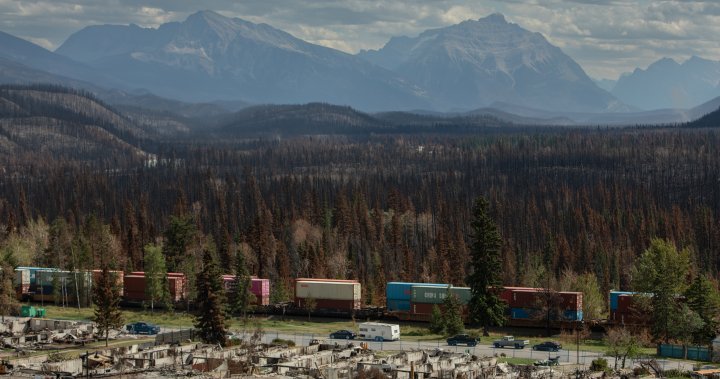In an unprecedented legal confrontation that highlights the tension between industrial interests and environmental management, Canadian National Railway has filed a lawsuit against Parks Canada, alleging insufficient action to protect vital rail infrastructure from devastating flood damage in Jasper National Park.
The railway giant launched legal proceedings Friday in Edmonton’s Federal Court, claiming Parks Canada failed to implement adequate flood mitigation measures following the catastrophic flooding that ravaged Jasper in 2023. This escalation marks a significant turning point in what has been a months-long dispute between the crown corporation responsible for Canada’s rail transport backbone and the federal agency tasked with preserving our national parks.
“This lawsuit represents a critical response to an urgent infrastructure protection issue,” stated CN spokesperson Avril Bentham in an email statement obtained by CO24. “The 2023 flooding caused substantial damage to essential transportation corridors that serve not just Alberta, but the entire nation’s supply chain.”
The legal filings paint a concerning picture of vulnerability along crucial transportation routes. According to court documents, CN Rail alleges Parks Canada has deliberately obstructed efforts to implement vital flood protection measures along the Athabasca and Miette rivers—waterways that run perilously close to rail lines that transport billions in goods annually through the mountain corridor.
Last summer’s flooding inflicted unprecedented damage across Jasper National Park, washing out sections of both rail lines and highways. The devastation forced extensive evacuations and disrupted one of Canada’s most critical transportation arteries for weeks, creating ripple effects throughout the national supply chain that cost the Canadian economy millions.
Parks Canada, while acknowledging receipt of the lawsuit, has declined to comment specifically on the allegations, noting only that they are “reviewing the claims with legal counsel” and that “environmental protection within national parks remains our paramount concern alongside public safety.”
Environmental law experts note this case highlights the growing challenges of infrastructure management in protected areas during an era of climate instability. Dr. Theresa Hammond, environmental policy professor at the University of Alberta, told CO24, “This lawsuit reflects the increasingly complex balancing act between maintaining critical national infrastructure and preserving ecological integrity—a tension that will only intensify as climate change accelerates.”
The court documents reveal CN is seeking not only injunctive relief forcing Parks Canada to permit flood mitigation work, but also substantial damages for what it describes as “willful obstruction that placed critical national infrastructure at unnecessary risk.”
Industry analysts point out that the Jasper corridor represents one of the few viable rail routes through the Rocky Mountains, handling approximately $18 billion in goods annually between eastern Canada and west coast ports. Any prolonged disruption creates significant economic vulnerability for Canada’s export-dependent economy.
Parks Canada has previously stated its commitment to working with infrastructure partners while fulfilling its mandate to prioritize ecological integrity. However, internal documents obtained through freedom of information requests suggest disagreements about appropriate engineering solutions have intensified in recent months, with Parks Canada officials expressing concerns about the environmental impact of CN’s proposed armoring of riverbanks and channel modifications.
The lawsuit arrives at a politically sensitive moment, as the federal government faces increasing pressure to address both climate adaptation infrastructure and environmental protection. Transport Minister Pablo Rodriguez has yet to comment on the dispute, though his office indicated they are monitoring the situation closely given its implications for national supply chain resilience.
As this unprecedented legal battle unfolds between two federal entities, the outcome will likely establish important precedents for how Canada navigates the increasingly complex intersection of climate adaptation, critical infrastructure protection, and environmental conservation. At stake is not just the resilience of a vital transportation corridor, but potentially the framework for how Canada balances these competing priorities in an era of climate uncertainty.
What remains to be seen is whether this conflict will force a more comprehensive national conversation about infrastructure vulnerability in protected areas, or if it will simply result in more fragmented approaches to climate adaptation across our national landscape?











